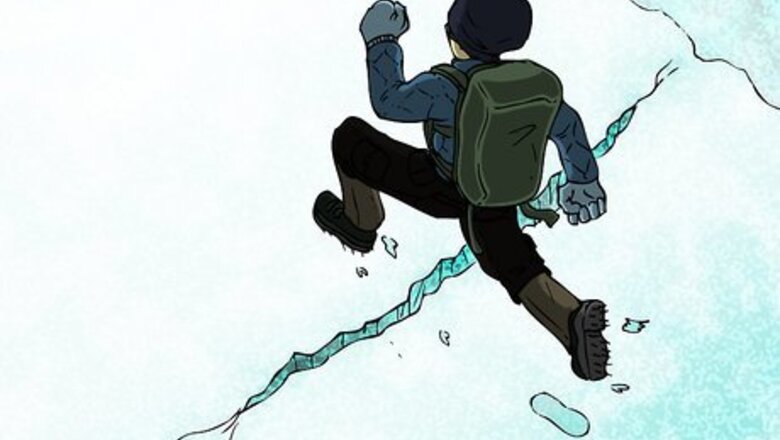
views
Reacting in the First Few Seconds
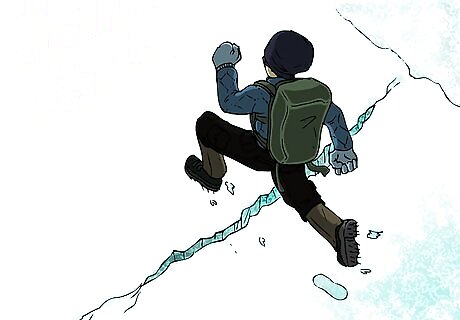
Jump up the slope. Most avalanche victims trigger the avalanche themselves, and sometimes the avalanche will start right beneath their feet. If this happens, try to jump up the slope, beyond the fracture line. An avalanche happens so quickly that it's almost impossible to react fast enough to do this, but it has been done.
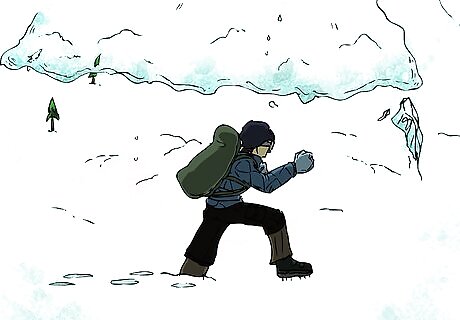
Move to the side of the avalanche. Whether the avalanche starts above you or beneath you, you may be able to make your way toward the side. Don't hesitate: move as quickly as possible to the side of the avalanche slope. If the avalanche begins well above you, you may be able to get out of its path before it reaches you. The snow will be moving fastest near the center of the flow, and that's also where the highest volume of snow will be.
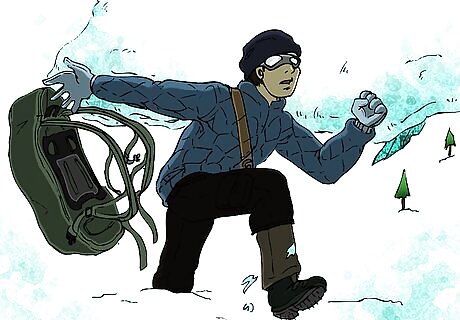
Let go of your heavy equipment. You want your body to be as lightweight as possible, so let go of your gear, but keep your backpack, it may protect your neck and back. This raises the chances that you'll be able to stay toward the surface of the snow. It goes without saying that you should not let go of survival equipment, such as a transceiver and probe or snow shovel; you'll need these if you get buried. People searching for you later may be able to find you if they see some pieces of equipment on the surface of the snow, so you could let go of a glove or something else that's light to increase the chances they'll find you.

Hold on to something. If you're unable to escape the avalanche, try to grab onto a boulder or sturdy tree. If it's a small avalanche, or if you're near the edge of the avalanche, you may be able to hold on until the flow of snow passes you. Even if you get ripped away from the object you're holding, if you can succeed in delaying your departure downhill, you have a better chance of not being buried or, at least, of not being buried as deeply. Keep in mind that a very powerful avalanche can carry away even large rocks and trees.
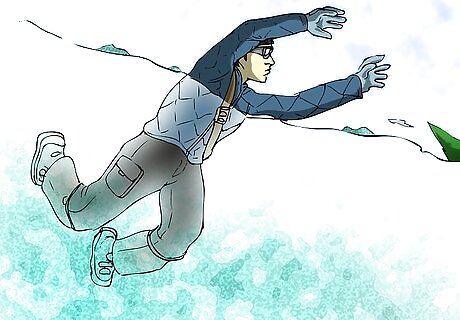
Start swimming. This is essential to helping you stay near the surface of the snow. The human body is much denser than snow, so you'll tend to sink as you get carried downhill. Try to stay afloat by kicking your feet and thrashing your arms in a swimming motion. Swim on your back. This way your face is turned toward the surface, giving you a better chance of getting oxygen more quickly if you get buried. Swim uphill. Swimming up will get you closer to the surface of the snow.
Surviving if You Get Buried in Snow
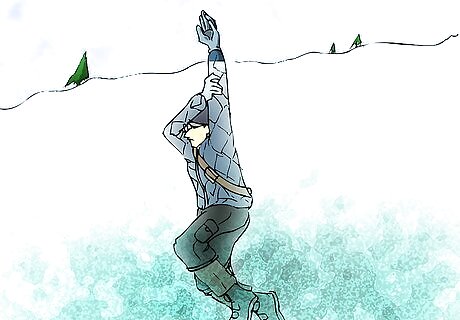
Hold one arm straight above your head. It should be pointed in the direction of the snow's surface. This will help you figure out which way is up since it's easy to get disoriented once you're buried. It may also help rescuers locate you. Spitting out a small amount of your saliva can also help with figuring out which way is up because the fluid will run down.
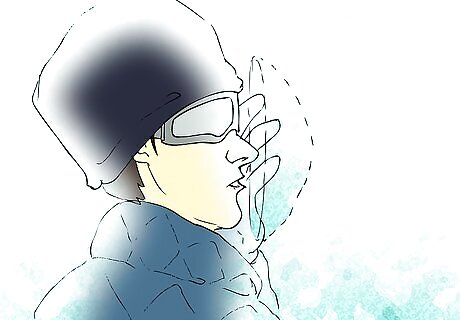
Dig a pocket around your face. Once the avalanche stops, the snow settles in as heavily as concrete. If you're buried deeper than a foot or so when it sets, it will be impossible to get out on your own. Your only hope then is to ward off asphyxiation long enough for people to dig you out. Use either your free hand or an avalanche shovel to dig an air pocket near your nose and mouth. When the avalanche slows down. With a small air pocket to breathe from, you should have enough air to last at least 30 minutes. Take a deep breath before the snow settles. Right before the snow settles, inhale deeply and hold your breath for a few seconds. This causes your chest to expand, giving you some breathing room when the snow hardens around you. If you don't have this breathing room, you may not even be able to expand your chest to breathe while you're buried.
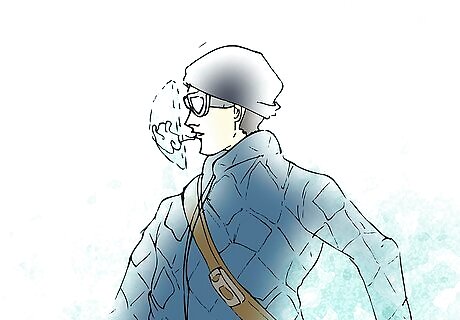
Conserve air and energy. Try to move once the snow settles, but don't jeopardize your air pocket. If you're very near the surface, you may be able to dig your way out, but otherwise, you aren't going anywhere. Don't waste precious breath by struggling against the snow. Remain calm and wait to be rescued. If you hear people nearby, try to call them, but don't keep it up if they don't seem to hear you. You can probably hear them better than they can hear you, and shouting just wastes your limited air supply.
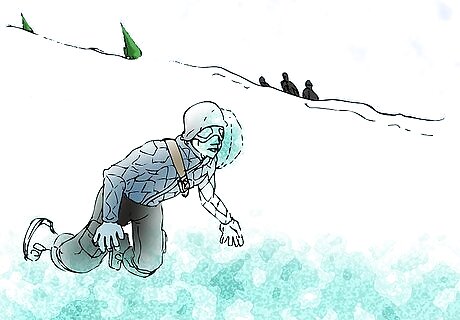
Wait for rescuers to come. If you hit the slopes with an avalanche beacon and probe, and your fellow skiers did the same, someone will be able to find you and dig you out. Stay calm and wait.
Increasing Your Chances of Survival
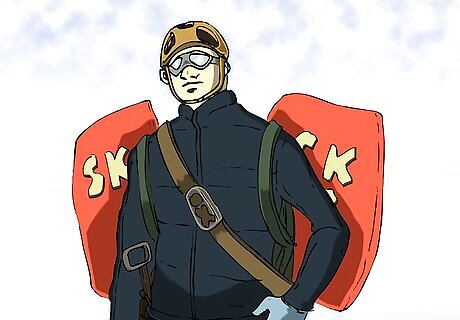
Take survival equipment, in case of an avalanche, always. Never hit the slopes without it. There are a few pieces of equipment that greatly reduce people's risk of dying in an avalanche. Invest in the following items: An avalanche receiver and probe. The receiver puts out a signal to show where the person is buried, and the probe is used to locate the person and start digging. Every person in your party should carry both. A small shovel. This is used to dig an air pocket around the face. A helmet. Many avalanche-related fatalities happen because of the initial impact of the snow knocking people off of their feet. Skier's airbags have become more popular in recent years. They help to keep your body toward the surface of the snow, so you're less likely to get buried.
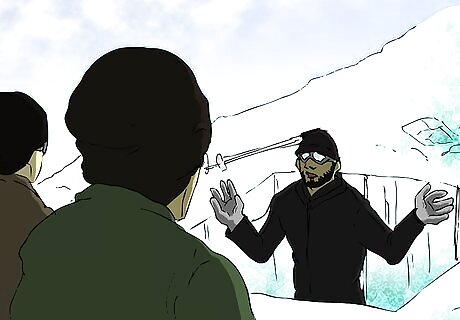
Take an avalanche training course. Avalanches happen frequently enough that many organizations provide intensive training courses to coach skiers and snowboarders on how to avoid avalanches, save themselves, and rescue each other. If you're traveling to an avalanche country, it's worth taking a course.

















Comments
0 comment